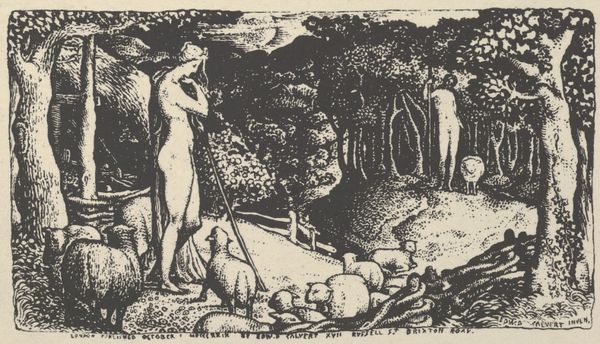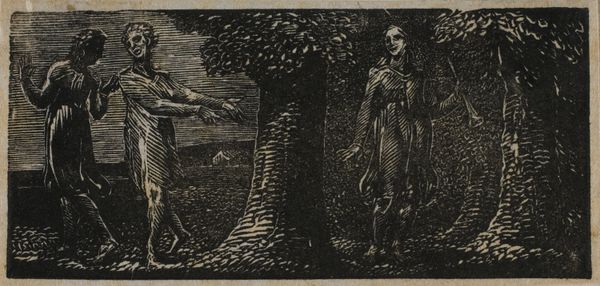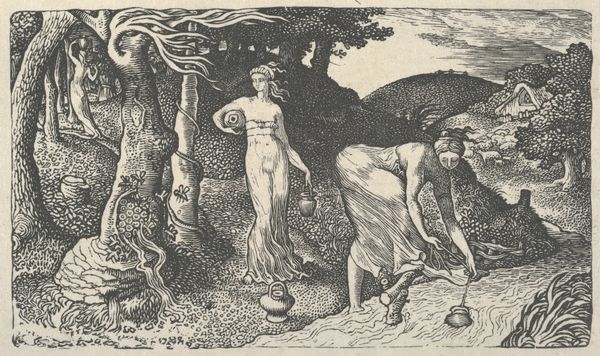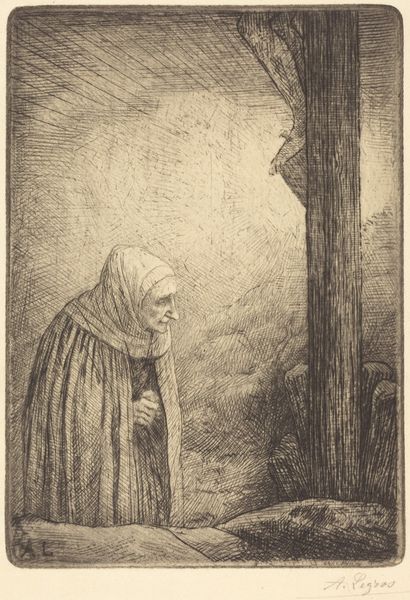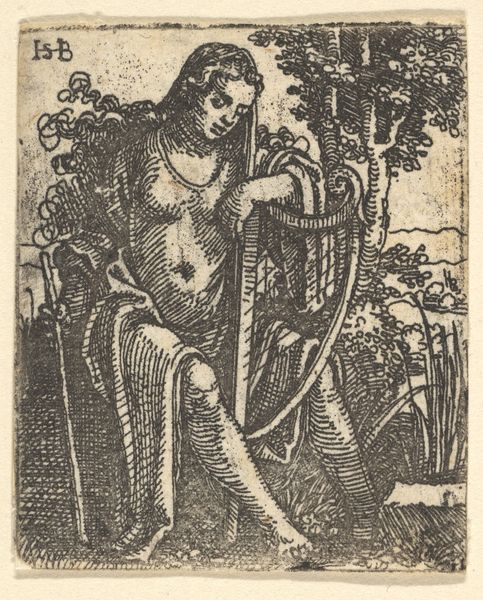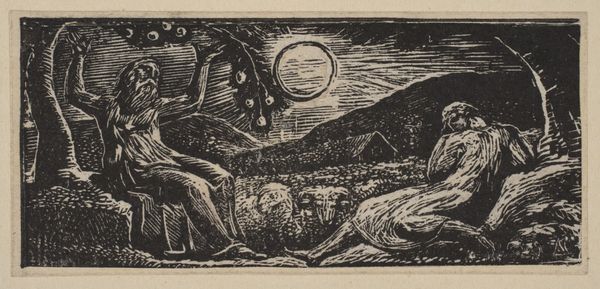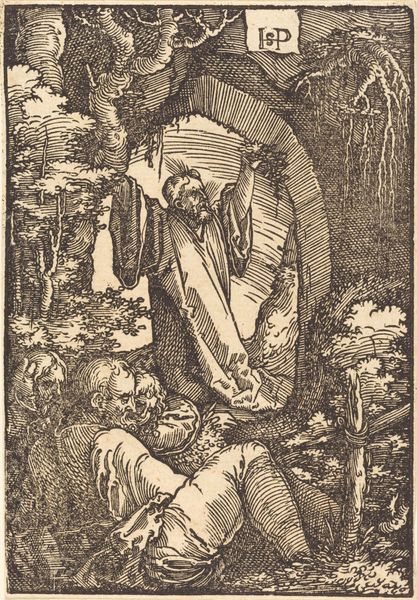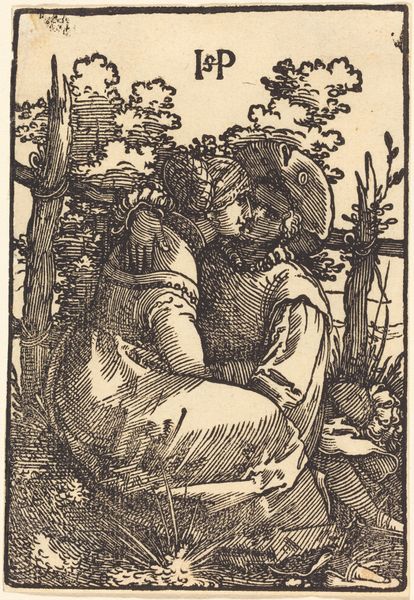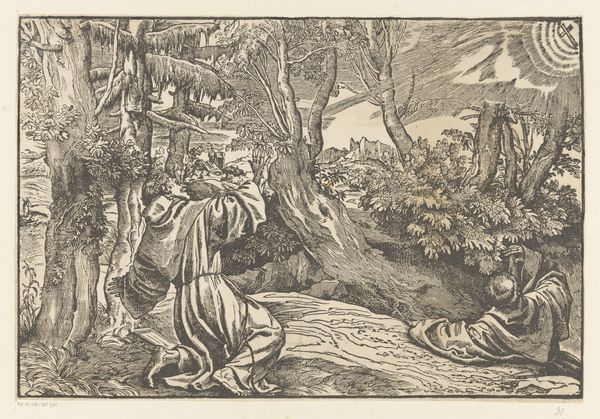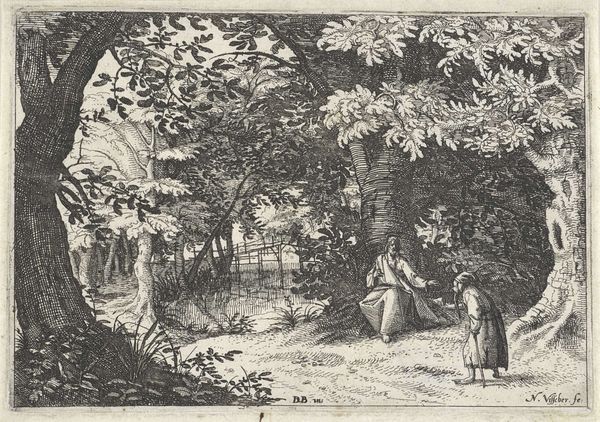
drawing, print, woodcut
#
drawing
#
fairy-painting
# print
#
landscape
#
figuration
#
romanticism
#
woodcut
#
cityscape
#
northern-renaissance
#
building
Dimensions: Image: 1 5/8 × 2 15/16 in. (4.2 × 7.5 cm) Sheet: 2 1/4 × 3 7/16 in. (5.7 × 8.8 cm)
Copyright: Public Domain
Curator: Before us is "Lady with the Rooks," a woodcut made by Edward Calvert in 1829. It's a captivating example of his unique Romantic style. Editor: Immediately, I'm struck by the contrasts. The lady herself seems so ethereal against the very detailed and almost harsh woodland setting. It's both serene and slightly unsettling. Curator: Woodcut as a medium lends itself well to those stark contrasts. The act of carving away at the wood, deciding what remains to carry the image, feels almost brutal. Look how the dense woodland, and the rooks themselves, are rendered. The sheer labor implied shapes how we perceive the Romantic vision presented. Editor: Absolutely. The rooks themselves have always been potent symbols, haven’t they? Portents of change, often associated with magic, folklore… even death. They’re like living embodiments of fate against the backdrop of the natural world. Do you think this relates to his own life and how he used these images for spiritual progression? Curator: Calvert’s embrace of pastoral and mythical themes positions his work as a challenge to the growing industrialization of England. His woodcuts weren’t made for a mass market; rather, they are intensely personal expressions using a very hands-on technique. The material’s availability influenced the production directly. Editor: Interesting that you say that, but that very contrast between the spiritual nature and the raw woodland seems to mirror that tension between the natural world and encroaching civilization. This solitary woman amidst symbols of folklore...is she resisting this? Evoking it? Curator: I'd argue Calvert intentionally created a friction. Consider his choice of wood. It's a relatively inexpensive and accessible material, which enabled him to create his visionary images while also resisting the allure of more 'refined' and costly materials embraced by the establishment. The labor makes it radical, and makes you think about its wider appeal and impact on production methods. Editor: It is compelling. In the end, that clash – whether deliberate or simply a product of its time – certainly lingers long after viewing it. It shows how a symbol like this, viewed and felt in two different lights can influence our understanding. Curator: Indeed. The artist's vision is forever bound to the materiality of its creation. An insight I find rather affecting.
Comments
No comments
Be the first to comment and join the conversation on the ultimate creative platform.
